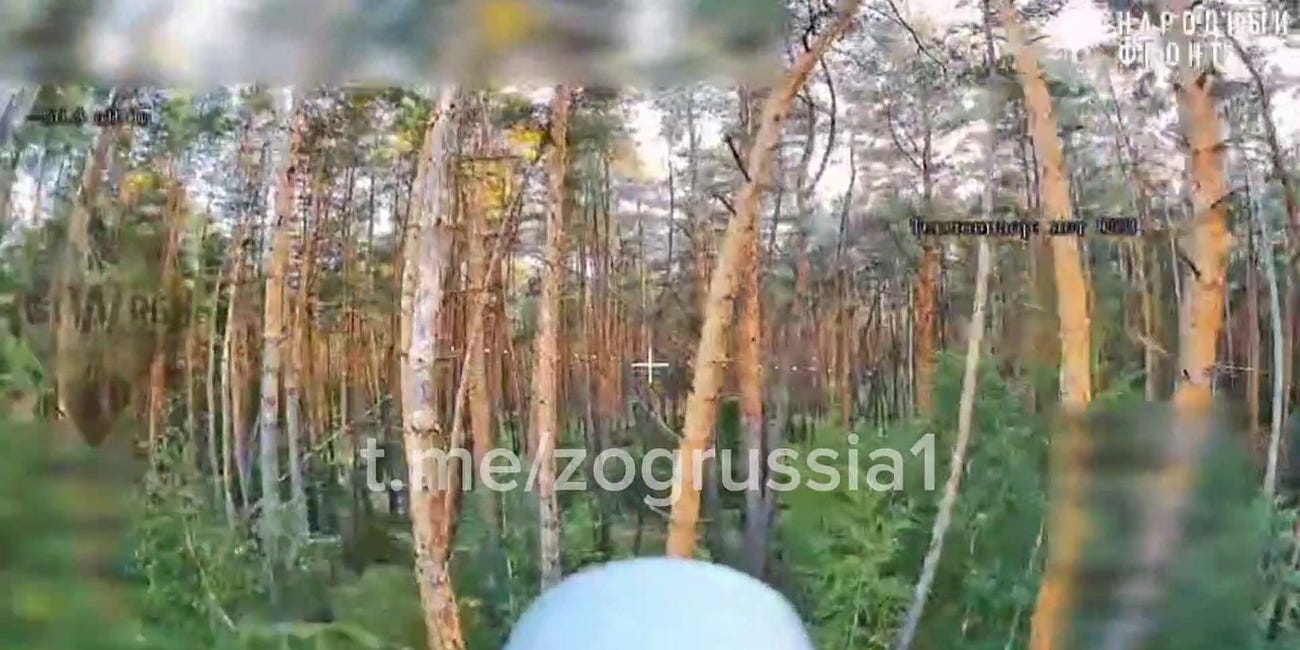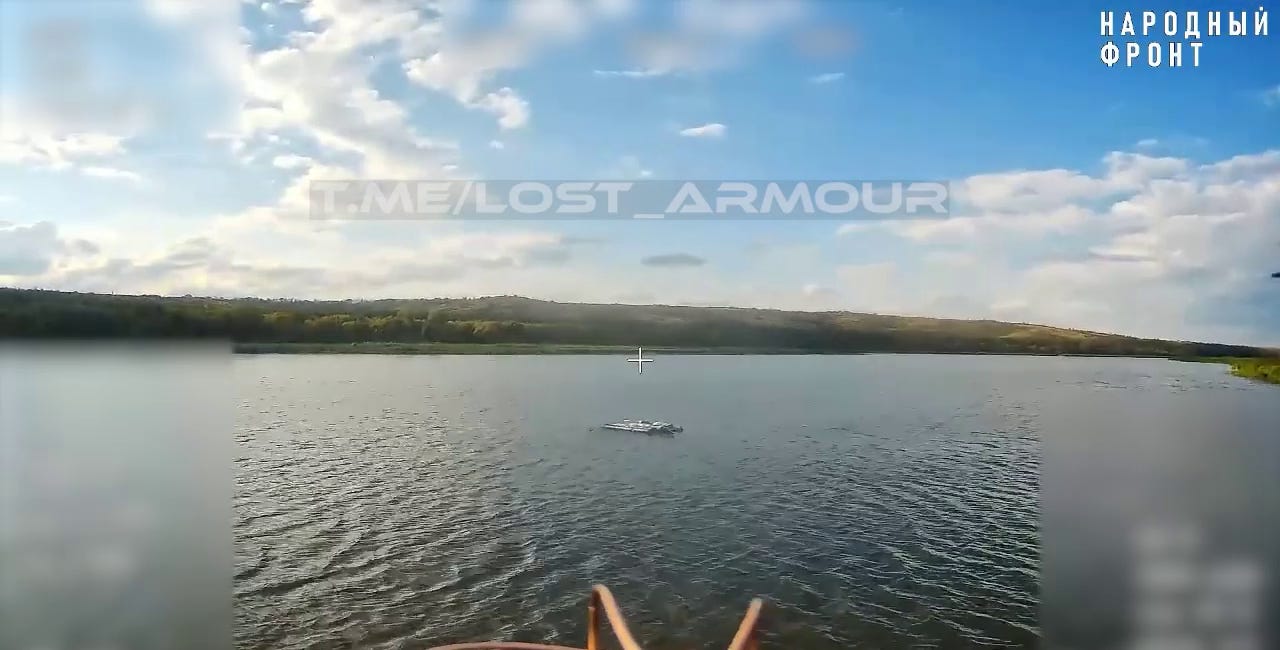Extensions: The Diminishing Protection Provided By Foliage And Water Obstacles
🇪🇪 🇫🇮 🇱🇻 🇱🇹
This post is an extension of material that has appeared in another newsletter/section and other parts of my website more generally. While my newsletters/sections are primarily categorized by region—you can either subscribe to specific newsletters/sections or subscribe to the entire website/all of my writings—many posts can be readily placed in multiple newsletters/sections—but only appear in one newsletter/section given how the Substack platform is configured—and may be highly relevant to readers who are primarily interested in other parts of the world. Posts dealing with ongoing conflicts or advances in military technology, for example, may highlight developments and dynamics that may be be of consequence to other countries. Similarly, posts that deal with the military capabilities of one country may be relevant to readers who are primarily interested in the military capabilities of other countries. My Extensions themed posts will be used to highlight content that I think subscribers of other newsletters/sections may find interesting. I hope that my Extensions themed posts help rationalize my peculiar comparativist analytical approach, one that results in my website covering a very wide range of military-related topics and much of the world.
In several recent posts, I have highlighted the diminishing protection that foliage offers militaries following the advent of armed “first-person video” (“FPV”) multirotor drones of the fiber-optic cable communication uplink/downlink variety—as opposed to those of the radio frequency communication uplink/downlink variety. This is of particular relevance to several NATO countries, particularly Estonia, Finland, Latvia, and Lithuania, given their proximity to Russia proper and the Russian exclave of Kaliningrad. These countries have long been able to treat fairly dense tracts of woodland, as well as peatland, marshes, and lakes, as obstacles to the mobility of Russian maneuver formations. While the longstanding threat posed by Russian fixed-wing and rotary-wing aircraft, as well as Russian tube and rocket artillery, has always extended over such difficult-to-navigate terrain, the advent of armed “first-person video” (“FPV”) multirotor drones, particularly those of the fiber-optic cable communication uplink/downlink variety, now presents a very distinct challenge to NATO militaries.
While readers who have subscribed to my Europe & NATO section/newsletter are likely to be very familiar with the everyday large-scale employment of armed “FPV” multirotor drones and similar to attack armoured vehicles, dismounted combatants, and various types of military equipment in the Russia-Ukraine War, it is important to recognize that Russia can employ armed “FPV” multirotor drones of the fiber-optic variety can be used to attack an extremely diverse array of targets that are separated from Russia-controlled terrain by fairly dense tracts of woodland, peatland, marshes, lakes, and similar.
I have addressed the diminishing protection that foliage offers militaries in several recent posts:
Video Documents Fiber-Optic "FPV" Multirotor Drone Employment In Dense Vegetation
Anyone interested in the implications of armed “first-person video” (“FPV”) multirotor drones of the fiber-optic communication uplink/downlink variety must confront the fact that there are many plausible use cases that have little, if any, documented real-world cases. This notably includes the employment of such armed “FPV” multirotors to undertake atta…
The following post features ⚠️ combat footage ⚠️ from the Russia-Ukraine War. While the attached video found in this post does not feature gore, reading/viewing discretion is advised. I only upload combat footage for informational purposes. Posts featuring not safe for work (NSFW) content, including combat footage, will never be monetized/paid, subscriber-only posts.
⚠️Combat Footage Highlights Diminishing Protection Offered By Foliage Amid Mounting Fiber-Optic "FPV" Multirotor Drone Threat
⚠️***This NSFW post features combat footage. While the attached video does not feature gore, reading/viewing discretion is advised.***
I have addressed Russia’s use of armed “FPV” multirotor drones of the fiber-optic communication uplink/downlink variety to attack targets separated by water obstacles in several recent posts:
Apparent Russian Use Of Fiber-Optic "FPV" Multirotor Drones Over The Dnieper River Highlights Versatility Of Configuration To Overcome Water Obstacles
A recent post on the Telegram account of the well-known Ukrainian technical expert and commentator Serhii Beskrestnov—better known by Serhii “Flash”—has drawn attention to Russia’s employment of armed “First Person Video” (“FPV”) multirotor drones of the fiber optic (FO)—as opposed to the radio frequency (RF)—uplink/downlink variety to attack terrestria…
The following post features what remains a rare video of an armed “FPV” multirotor drone of the fiber-optic communication uplink/downlink variety being used to attack a waterborne target, which is to say a documented attack in which said multirotor drone is itself flown over water.
Video Documents Use Of Fiber-Optic "FPV" Multirotor Drone To Attack Waterborne Target
A new video from the Russia-Ukraine War shows what appears to be a Russian armed “first person video” (“FPV”) multirotor drone of the fiber optic uplink/downlink variety being used to attack a raft that Ukrainian forces were using to resupply forces on the Kleban-Buk reservoir, which is located in the Ukrainian-controlled part of Ukraine’s Donetsk provi…





